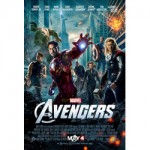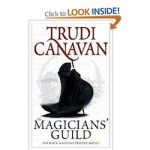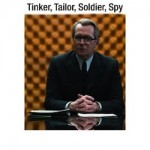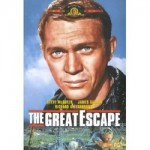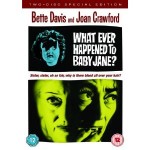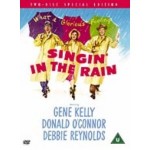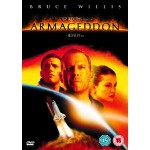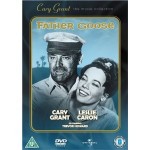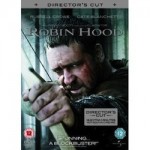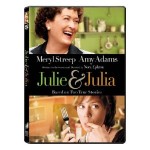Timekeeping isn’t my strong point. I’m either very early for appointments or more usually – very late. I was even hideously late for a job interview once; luckily the interview panel was full of lovely people who excused my red face, poured me some water….
New Year Resolutions
I’ve had a little bit of break from the website for a couple of weeks, I had lots of plans for articles to write and publish over Christmas and New Year but work, family visits and festivities all conspired to get in the way…
5 movies I can’t wait to see… but will just have to!
This summer hasn’t exactly been a classic. Not in terms of the shocking weather and certainly not when you look at what’s been on at the cinema. Harry Potter was the first brilliant blockbuster of the year…
Top Ten: Bank Holiday Movies
Here we are – the last Bank Holiday Monday until Christmas. I’m sure there’s lots to do but I’m going to stick with the tradition of sitting watching movies…
Whatever Happened To Baby Jane?
Trashy, campy nonsense – loved it!
Given my love of all things camp and the amount of time I spend with men who regard Bette Davis as the ultimate icon it seems incredible that I’ve made it to 2011 without seeing What Ever Happened To Baby Jane? Thanks to a reader’s suggestion ….
Singin’ in the Rain
The perfect movie musical – why haven’t you seen it yet?
The 1940s and 1950s was the golden era for the movie musical. A true classic was produced almost every year and most of these came from the lot of the famous MGM studios. You must know the films – Seven Brides For Seven Brothers, High Society, Annie Get Your Gun, Gigi. The list goes on and on. Despite being recognized now as one of the greatest films of all time with accolades such as the number one slot on the American Film Institute’s list of 100 Greatest Musicals and being selected for preservation in the National Film Registry, Singin’ In The Rain, was not a great financial success on its release. Proof that the box office isn’t everything.
Singin’ In The Rain is a film about films, about Hollywood, actors and actresses and most importantly the transition from silent movies to the ‘talkies’. Don Lockwood and Lina Lamont (Gene Kelly and Jean Hagan) are the most popular film stars in their world – their love stories, almost always period pieces, entrance audiences everywhere. As does the story of their own true love. A story completely fabricated by the studio’s publicity team. Despite her good looks and ladylike appearance Lina is a shrill-voiced, shallow harridan. Don is much more interested in chorus girl Kathy Selden (Debbie Reynolds). The first Lockwood and Lamont talkie, The Duelling Cavalier, is a disaster – the preview audience treats it with derision and many vow to never watch another Lockwood and Lamont film again. Don, Kathy and Don’s best friend Cosmo Brown (a scene-stealing Donald O’Connor) hatch a plan to save the film by turning it into a musical with Kathy dubbing Lina’s dreadful voice. Can The Dancing Cavalier save the studio, Lockwood and Lamont’s reputation and careers and Don and Kathy’s blooming relationship?
It’s hard to know where to begin with Singin’ In The Rain, there’s just too much brilliance…..
Father Goose
An amusing WWII romp with Cary Grant unconvincing as an uncouth slob
Whenever Cary Grant is mentioned the automatic image is smooth, suave, sophisticated. A real gentleman. Walter Christopher Eckland, his character in the Oscar winning Father Goose, his 73rd and penultimate film, is as far from sophisticated as it is possible to get. But can Grant really put aside almost 40 years of habit and pull off the unshaven, drunken beachbum role?
Set during the Second World War, Father Goose is the story of Walter Eckland, an American beachcomber who is forced by a Royal Australian Navy Commander (an old friend who definitely has the measure of Eckland) to act as a coast-watcher for the Allies. For his (independently verified) reports on Japanese planes and shops Eckland, now codenamed Mother Goose much to his disgust, is rewarded with bottles of whisky which are hidden around the small island on which he is based. Walter’s quiet life is disturbed by the arrival of Catherine Freneau, played by Leslie Caron, and seven schoolgirls who have been abandoned while attempting to reach safety in Australia. The clash between the sophisticated Mademoiselle Freneau and her charges and the boorish Eckland takes place against the backdrop of increasing danger from the ever-present Japanese.
I’ve always enjoyed Father Goose. It’s a silly, funny romantic comedy. It is however almost impossible to imagine Cary Grant as anything other than a handsome, suave hero and he doesn’t really convince as a slob. The beautifully clean white socks he wears in one scene doesn’t help either – why would he have such clean clothes? He’s just Cary Grant. That’s ok though. Father Goose isn’t a serious drama, it’s a bit of fun. And we Cary Grant fans know and love our man whatever – we know his character isn’t really a hobo…
Robin Hood (2010)
Ridley and Russell achieve the impossible – they make Robin Hood boring
I think there’s something naturally ingrained in the DNA of us Brits – a deep love for Robin Hood and everything related to Sherwood Forest. Even the most fiscally conservative cheer when the evil rich are robbed for the benefit of the poor and Robin defeats the scheming Sheriff of Nottingham.
Julie & Julia
An enjoyable biopic of two women and how cooking changed their lives
There’s an ongoing discussion on film blogs, review sites and magazines – why aren’t there more female directors? Why aren’t female directors recognised for their work? Are too many women shackled by the ghettoisation of making films for other women?

